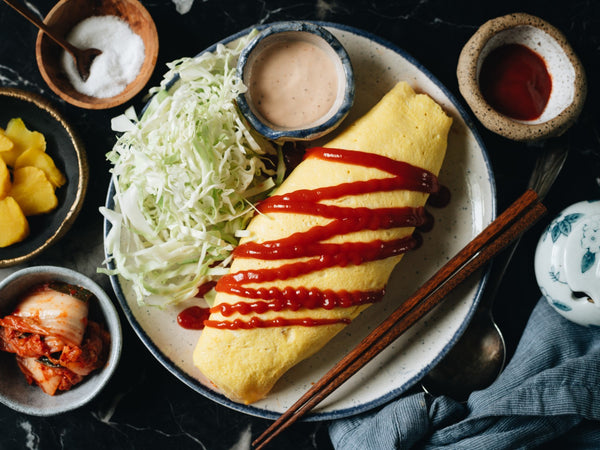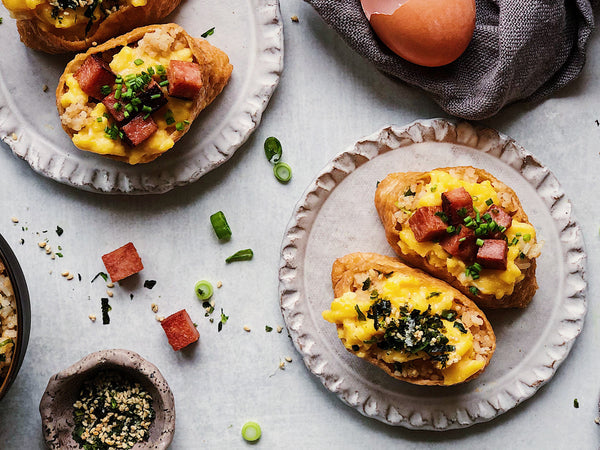
From the recipe author: Golden fried rice, or Huang Jing Chao Fan, is a traditional Chinese dish that uses a special technique: instead of scrambling the eggs with the rice, this recipe uses egg yolks to coat the rice first, then proceeds to stir fry it. It creates a beautiful yellow color that’s reflected in the name of the dish, and it lends a subtle and aromatic flavor.
While the words “golden fried rice” refer to the egg yolk coated rice, it’s quite common to use all kinds of combinations of other ingredients to make the dish. When I make golden fried rice, I prefer to add some shrimp and fresh vegetables such as asparagus. Both go really well with the mild flavor of the rice, add a beautiful texture to the dish, and make it filling enough to serve as a main course.
Directions
- Add the rice to a medium-sized bowl and fluff with your hands to separate the grains. Add the egg yolks. Mix until all the grains of rice are evenly coated with egg yolk.
- Heat 1/2 tablespoon of the peanut oil in a large skillet over medium heat until hot. Add the shrimp. Stir and cook until the shrimp turn white, 1 to 2 minutes. Transfer the shrimp to a bowl and set aside.
- Add the remaining 2 tablespoons of peanut oil to the skillet and swirl to coat well. Add the yolk-coated rice and sprinkle evenly with salt. Stir continuously until the egg yolks are cooked, 5 to 6 minutes. You'll know your rice is cooked properly when the yolk-coated grains are fully separated, coated with oil, and heated through.
- Add the garlic and asparagus to the rice. Cook and stir until the asparagus is cooked through, about 2 minutes. Add the green onions and stir to combine.
- Add the cooked shrimp back to the skillet and stir with the rice to combine. Carefully taste the rice and adjust seasoning if needed. Transfer rice to a large bowl or plate to serve as a side, or divide among 3-4 individual bowls to serve as a main course.
Farm Team Tips
The type of rice you choose for this dish is important! Medium grain white rice (like jasmine) is less sticky than short grain rice and holds together better than long grain. Brown rice can also be used, but your fried rice will have a chewier texture.
Leftover rice tends to have less moisture and stickiness than freshly cooked rice. This will help the grains separate when stir fried. If you don't have leftover rice on hand, make a fresh batch and spread it into a thin layer on a large plate to allow it to cool quickly and dry out slightly. Once the steam subsides, transfer it to the fridge (without covering it) and let sit until completely cooled before using.
Save your unused egg whites for our favorite recipes that require them for meringues and other light and airy applications.
To achieve a crispy texture, time and heat are essential. Don't be afraid to use a nonstick pan to achieve the texture you're looking for without risking the rice sticking. In addition, don't skimp on the oil: otherwise, the rice will have a dry mouth feel once toasted.






